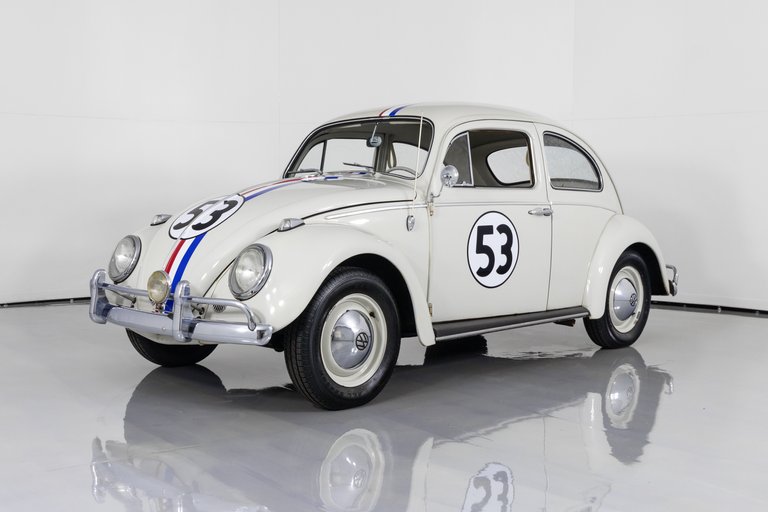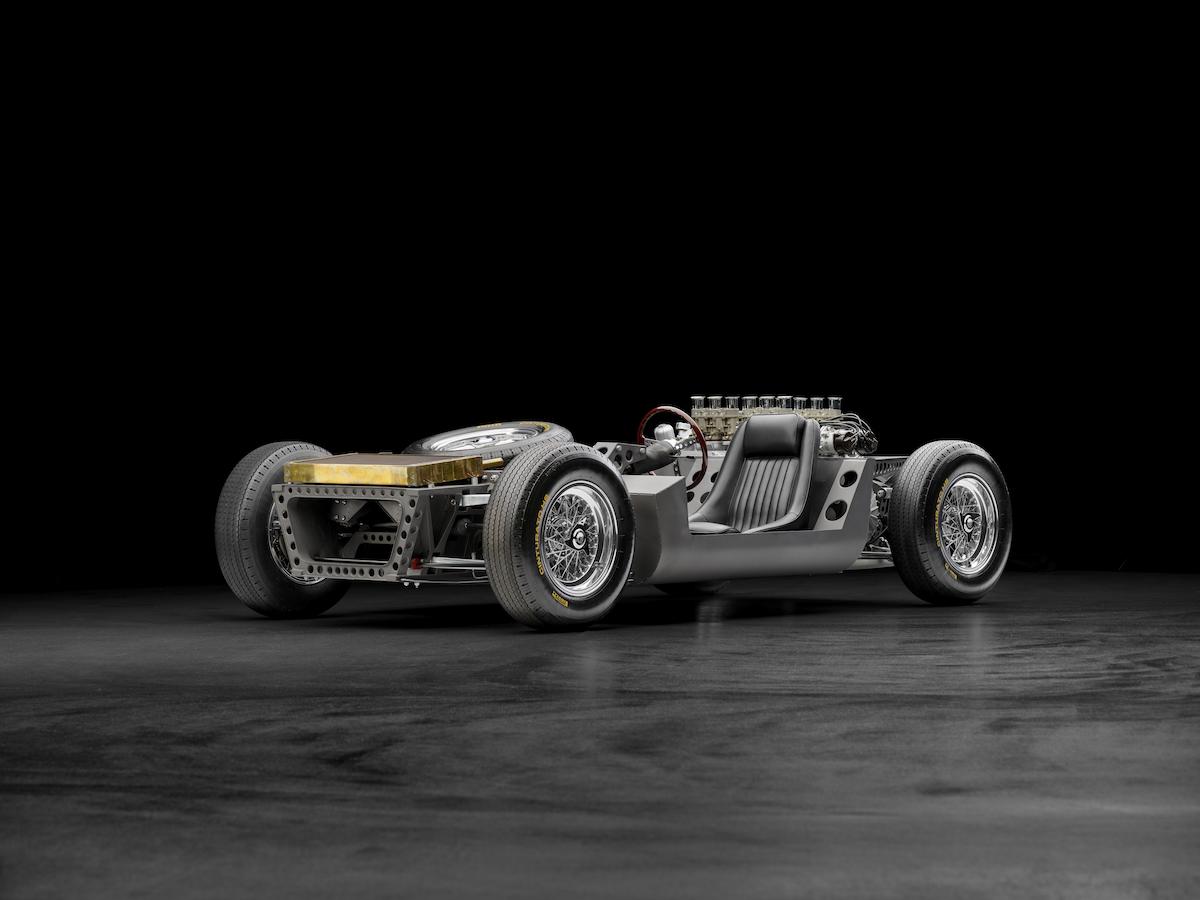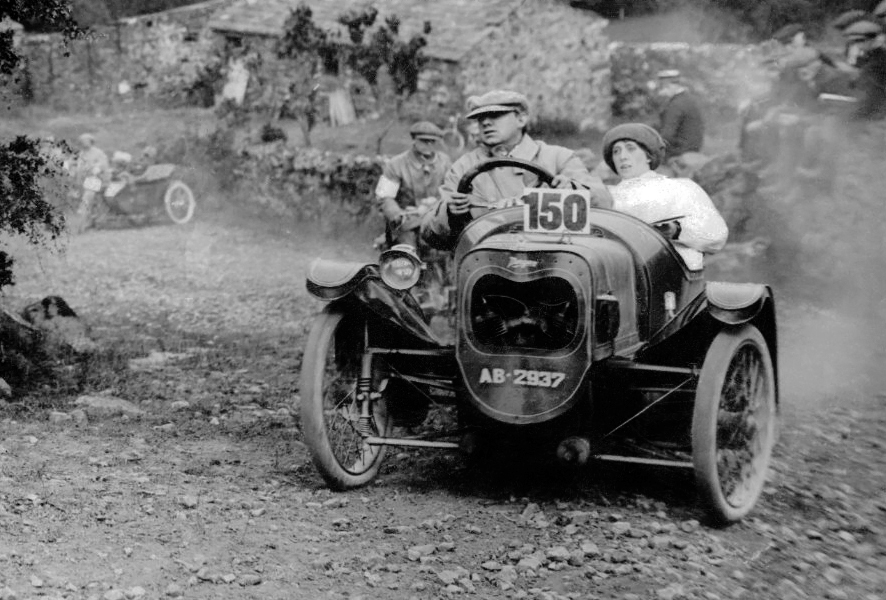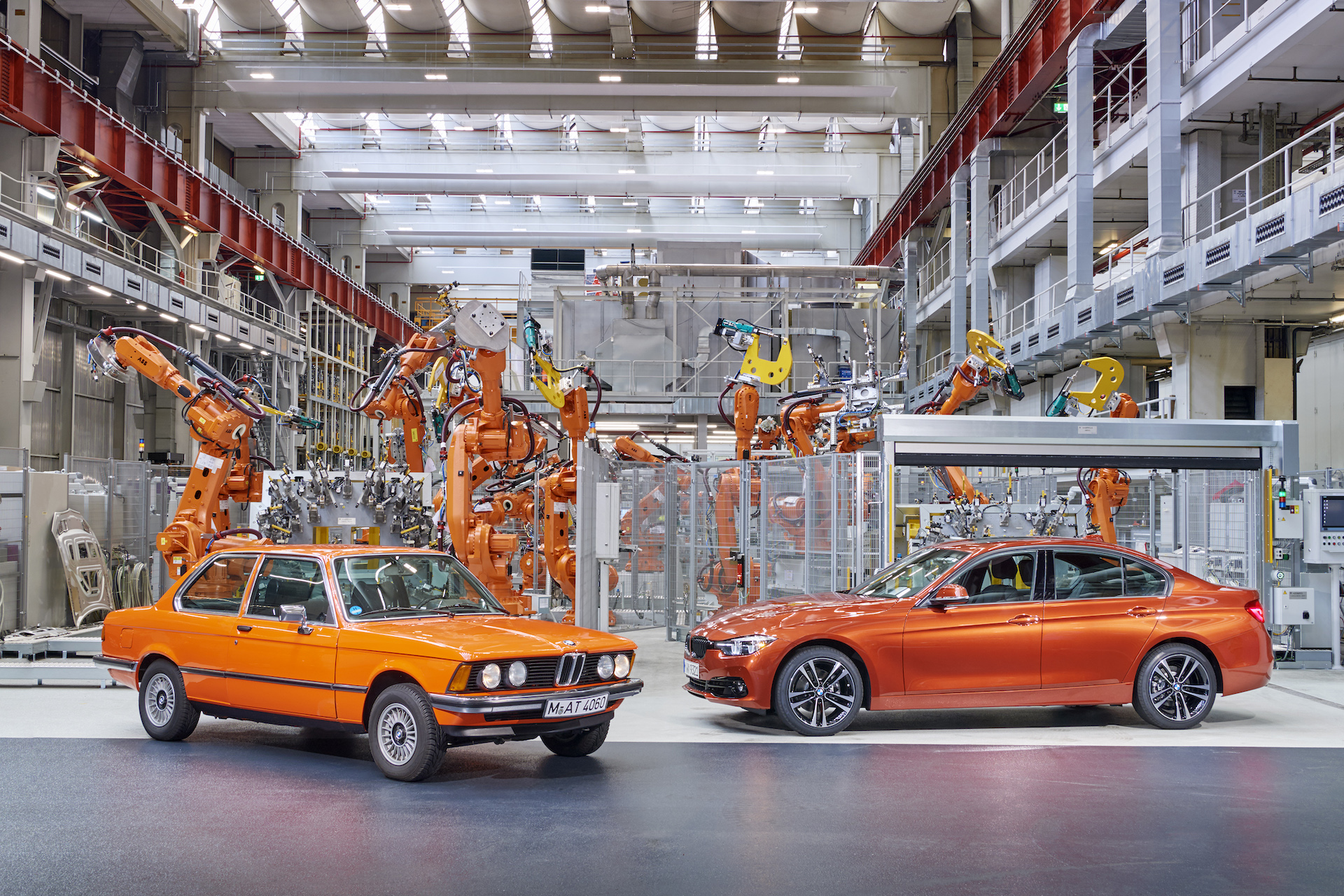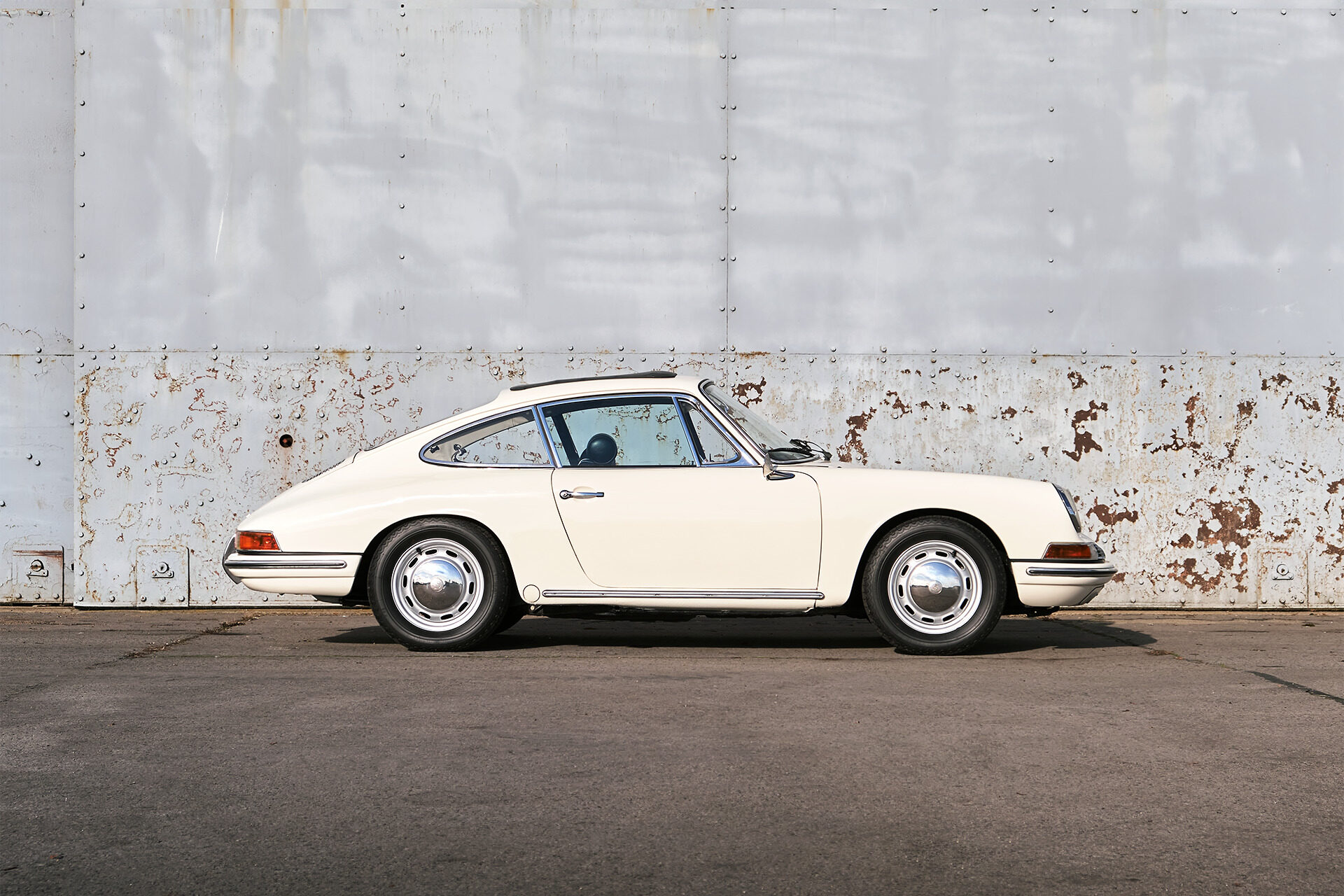How the Volkswagen Beetle won friends and influenced people all around the world. Few cars have achieved the cult status of the Volkswagen Beetle. Some pundits will nominate the original Mini, or the Series Land Rovers, or perhaps the long running Ford Mustang. But as undeniably significant as these cars are, none can claim the far-reaching appeal of the delightfully cute, immensely personable and unabashedly modest machine fondly referred to as the Beetle, or more simply the Bug.
It was the Beetle’s signature design – as exemplified by those expressive headlights that look like cartoon-eyes and the happy-smile graphic of its curved bonnet – that prompted Walt Disney to create one of the most loved movies ever starring a car, 1968’s Herbie (The Love Bug).
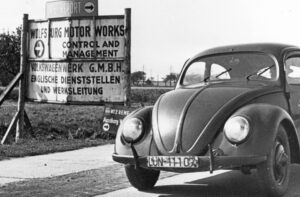
One of the first to leave the factory
Featuring a pet-like Beetle able to think and drive itself and sporting the now iconic ‘53’ racing number, Herbie spawned a multi-film franchise that has brought immeasurable joy to families around the world for over 50 years, and counting. No one can ever know for sure, but we’re confident a boxy ‘63 Corolla wouldn’t have had quite the same appeal.
But even before it’s starring turn on the silver screen, the Bug had become an international icon, thanks in large part to its reputation for being so brilliantly simple, reliable and useful. Being relatively compact and light, it was easy to steer and operate, not to mention capable of being parked in the sort of tight inner-city slots that drivers of larger machines could only drive on by.
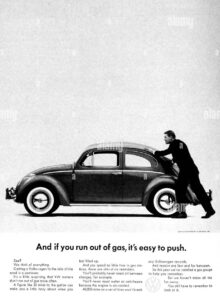
Classic VW Beetle Print Ad
It was easy on fuel, too – even at a time when gas was cheap in 1950s/60s America – and its hearty-little air-cooled flat four-cylinder engine was remarkably reliable, often avoiding the problems liquid-cooled powerplants suffered in extremes of climate.
In the USA, the Beetles biggest sales and export market, the Bug’s formula of being simple, modest and looking almost the same from one year to the next, made it a refreshing antidote to the excesses of typical 1950s ‘yank tanks.’
Innovative advertising campaigns helped cement the Bettle’s reputation as a restrained, European antidote to rampant mass consumerism. Notable executions included those by advertising giant DDB with print ads featuring a tiny Beetle on a white background with the tagline ‘Think Small.’ Or another, with a character in a business suit pushing a car out of frame, with the tagline “And if you run out of gas, it’s easy to push.”
The modesty, simplicity and longevity of the Beetle, and its commercial vehicle counterpart the Kombi, helped make it an intrinsic part of, and later a defining symbol of the 1960s counter-cultural movement, as represented by the hippy, surfing and nascent environmental movement.
In countries like Australia with rudimentary road networks, the Beetle’s relatively high ground clearance, light weight and good power-down, thanks to its engine weight being over the drive wheels, made it excellent at handling rough conditions.
Those bulging wheel arches were an asset, too, as they allowed easy fitment of snow chains and didn’t clog with mud as easily as some other cars. Indeed, it was shown on more than one occasion that a well-driven Beetle could be as tenacious when tackling rough back-country tracks a Land Rover or Jeep.
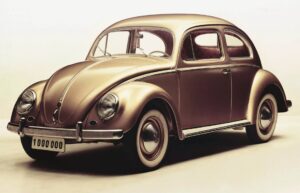
1,000,000th Beetle
The baked-in reliability and durability of the Beetle also won it many fans. We take it for granted today that a car will run for a decade and maybe 200,000km with little more than an occasional oil change and fresh tyres. But in the 1950s and 60s, that was not the norm and cars often required servicing every month and replacement parts – including a clutch or other significant mechanical component – every year or two.
Volkswagen was a pioneer of high-quality, high-tolerance manufacturing and construction and its local dealer network was distinctively branded, well-equipped and provided relatively cheap servicing and parts. The Beetle may have been priced as a cheap and cheerful car, but the quality of its manufacturing was anything but.
Thanks to its enormous popularity and impressive longevity, the Bug became a default first car for generations of Aussie teenagers, a phenomenon that only began to fade as the new millennium approached and the last Aussie-made cars reached the quarter century mark.

